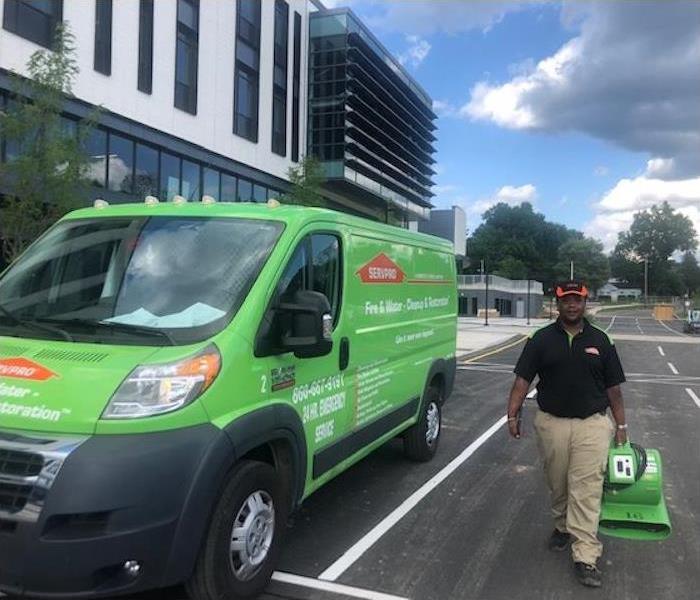Reliable and Prompt Newington Fire Damage Restoration
4/3/2023 (Permalink)
 SERVPRO has the latest technology and IICRC-certified technicians to restore your home in Newington after fire damage.
SERVPRO has the latest technology and IICRC-certified technicians to restore your home in Newington after fire damage.
SERVPRO Is a Leading Provider of Newington House Fire Cleanup
Managing the aftermath of Newington fire damage is an overwhelming experience for most property owners. Knowing you can call on a reputable restoration company to handle all aspects of cleaning and deodorizing structural components and contents is a great relief. You can leave the restoration in capable hands and work on other pressing post-crisis recovery issues for you and your family.
What Training and Resources Does SERVPRO Offer Customers?
The smoke and soot that contaminates the air and covers the surfaces after Newington fire damage requires specialized strategies to clear it away without permanent harm to the underlying surfaces. SERVPRO commits to enrolling workers in a comprehensive manager and technician training course from the Institute of Inspection, Cleaning and Restoration Certification (IICRC). The IICRC training prepares work crews to manage everything from safety hazard evaluation and controls through water and fire damage residue removal, finishing with drying and malodor elimination. All strategies learned have a core of extensive research. SERVPRO uses effective EPA-registered cleaning products and tools throughout the restoration project to rid surfaces of different types of fire damage soiling.
How Does SERVPRO Apply IICRC Fire Damage Restoration Fundamentals to Your Property?
Our crews employ the knowledge mastered during IICRC classes to remove the contaminated firefighting water as a first step. Technicians classify the dirt and grime left after the combustion of various materials and match the residues to the appropriate techniques and cleaning products, tools, and tactics to dissipate, dissolve, or emulsify it for capture and disposal. Common types of residues left after the heat and flames paired with the most productive removal approaches include:
- Dry soot is loose ashy remnants created when wood and paper burn. Vacuuming, brushing, chemical (dry) sponging, and pressurized air work well to dislodge the residue. It responds poorly to water or oil-based cleaners, which tend to smear the ash.
- Wet soot forms a thick, sticky coating consisting of tiny particles of combusted plastic, rubber, or textiles. The closely adhered soiling is vulnerable to loosening by water or oil-based cleaning agents, wiping, scrubbing, or rinsing away depending on whether the residue is water or oil-based (like removes like).
- Protein-based soot consists of dehydrated foods, fats, and oils superheated during a kitchen fire. The highly malodorous residue encases surfaces as a transparent lacquer-like material, tenaciously attached. Solvents and abrasive tools help break up the soot for removal.
Can SERVPRO Eliminate Smoke Odors?
Lingering smoke smells can prolong the agony of Newington fire damage for property owners. Soot particles carry the odor, and when they settle into cracks and crevices, the stench continues to undermine your quiet enjoyment of your property, even long after water and soot residue removal appears complete. When fire debris removal and deep cleaning are inadequate to eliminate smoke and soot odors, SERVPRO tries the following options until deodorization is successful:
- Ozone treatments transfer an “extra” oxygen atom of the ozone molecule (O3) to the odor molecules, changing their chemical makeup and neutralizing the odor through oxidation.
- Hydroxyl generators use ultraviolet (UV) energy to generate and diffuse hydroxyls and organic oxidants safely. Hydroxyls react with the volatile organic compounds (VOC) that cause odors to change into inoffensive-smelling substances and neutralize their stench.
- Thermal fogging recreates the conditions that created the malodorous soot, pairing the smelly particles with combusted deodorants to eliminate the smoky smells.
Count on SERVPRO of Newington / Central Hartford when you need fast and effective fire damage mitigation and remediation. We are available 24/7 at (860) 667-9191.






 24/7 Emergency Service
24/7 Emergency Service